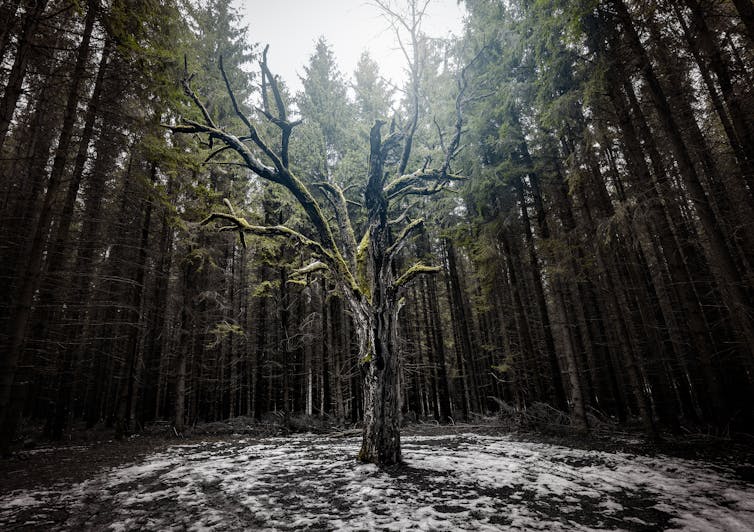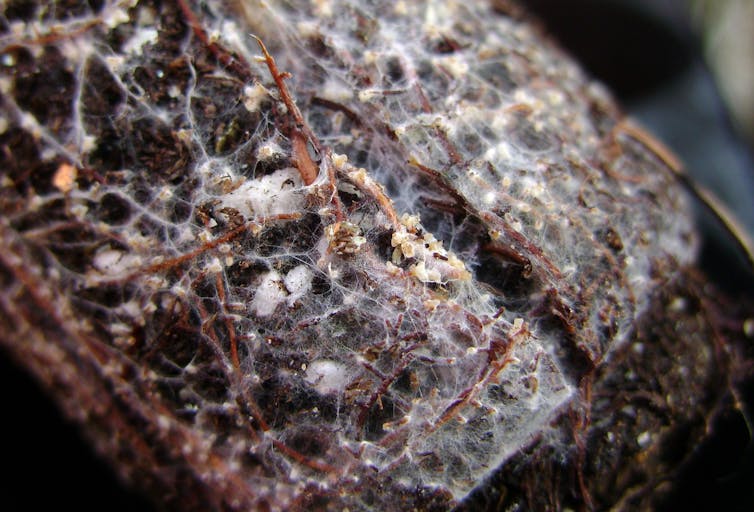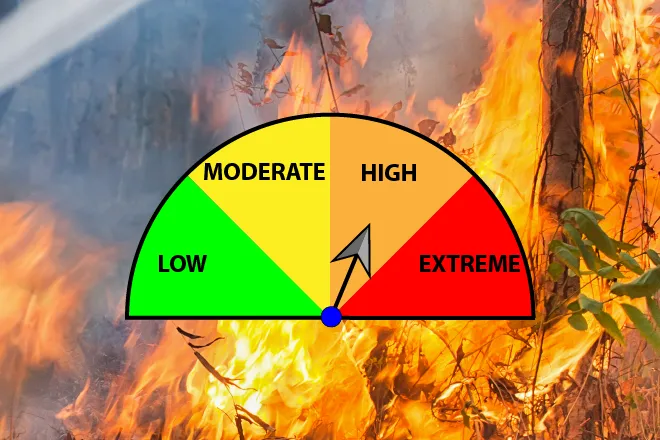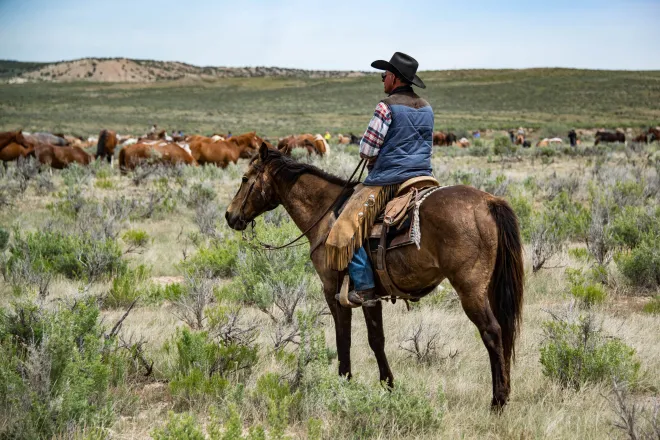
Curious Kids: How do trees die?

Camille Stevens-Rumann, Colorado State University

Curious Kids is a series for children of all ages. If you have a question you’d like an expert to answer, send it to curiouskidsus@theconversation.com.
How and why do trees die? – Anish K., age 11, Boston, Massachusetts
Trees can die suddenly or quite slowly.
Fire, flood or wind can cause a quick death by severely damaging a tree’s ability to transport water and nutrients up and down its trunk.
Sometimes a serious insect attack or disease can kill a tree. This kind of death usually takes from a few months to a couple of years. Again, a tree loses its ability to move water and nutrients, but does so in stages, more slowly.
A tree can also die of what you might call old age.
I am a scientist who studies trees and the web of living things that surround them. The death of a tree is not exactly what it seems, because it directly leads to new life.
Different trees, different life spans

Trees can live an incredibly long time, depending on what kind they are. Some bristlecone pines, for instance, are among the oldest known trees and are more than 4,000 years old. Others, like lodgepoles or poplars, will have much shorter life spans, from 20 to 200 years. The biggest trees in your neighborhood or town are probably somewhere in that range.
You’ve probably noticed that different living things have different life spans – a hamster is generally not going to live as long as a cat, which isn’t going to live as long as a person. Trees are no different. Their life spans are determined by their DNA, which you can think of as the operating system embedded in their genes. Trees that are programmed to grow very quickly will be less strong – and shorter lived – than ones that grow very slowly.
But even a tough old tree will eventually die. The years and years of damage done by insects and microscopic critters, combined with abuse from the weather, will slowly end its life. The death process may start with a single branch but will eventually spread to the entire tree. It may take a while for an observer to realize a tree has finally died.
You might think of death as a passive process. But, in the case of trees, it’s surprisingly active.
The underground network
Roots do more than anchor a tree to the ground. They are the place where microscopic fungi attach and act like a second root system for a tree.

Fungi form long, superfine threads called hyphae. Fungal hyphae can reach much farther than a tree’s roots can. They gather nutrients from the soil that a tree needs. In exchange, the tree repays fungi with sugars it makes out of sunlight in a process known as photosynthesis.
You might have heard that fungi can also pass nutrients from one tree to another. This is a topic that scientists are still working out. Some trees are likely connected to other trees by a complex underground network of fungi, sometimes called the “wood wide web.”
How the wood wide web functions in a forest is still not well understood, but scientists do know that the fungi forming these networks are important for keeping trees healthy.
Afterlife of a tree
Before it topples over, a dead tree can stand for many years, providing a safe home for bees, squirrels, owls and many more animals. Once it falls and becomes a log, it can host other living things, like badgers, moles and reptiles.

Logs also host a different kind of fungi and bacteria, called decomposers. These tiny organisms help break down big dead trees to the point where you would never know they had existed. Depending on the conditions, this process can take from a few years to a century or more. As wood breaks down, its nutrients return to the soil and become available for other living things, including nearby trees and fungal networks.
A tree leaves a legacy. While alive, it provides shade, home for many animals and a lifeline to fungi and other trees. When it dies, it continues to play an important role. It gives a boost to new trees ready to take its place, shelter to a different set of animals and, eventually, nourishment for the next generation of living things.
It’s almost as if a tree never truly dies but just passes its life on to others.
Editor’s note: This story has been updated to emphasize that much remains unknown about the relationship between trees and fungi.
Hello, curious kids! Do you have a question you’d like an expert to answer? Ask an adult to send your question to CuriousKidsUS@theconversation.com. Please tell us your name, age and the city where you live.
And since curiosity has no age limit – adults, let us know what you’re wondering, too. We won’t be able to answer every question, but we will do our best.![]()
Camille Stevens-Rumann, Assistant Professor of Forest & Rangeland Stewardship, Colorado State University
This article is republished from The Conversation under a Creative Commons license. Read the original article.

















